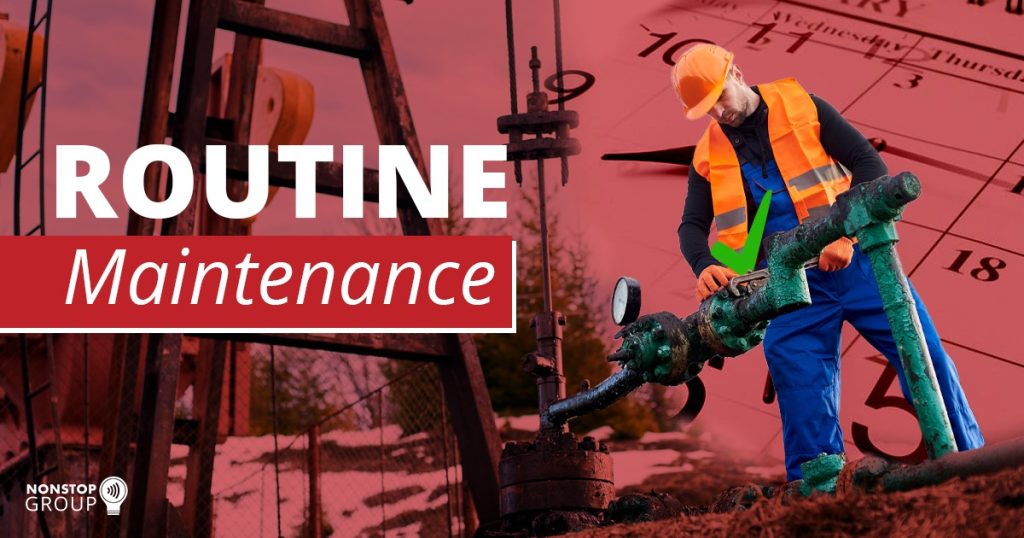6 Min Read
Overview
Almost all businesses have assets and equipment that require regular servicing and inspections for enhanced performance and productivity. Asset inspections and repairs ensure longer equipment life, improved safety of workers, and uninterrupted business operations.
As the saying goes, ‘prevention is better than cure,’ routine maintenance tasks ensure that the production shift does not face interruptions like asset breakdown, which may impact business operations and may lead to losses.

What is Routine Maintenance?
Routine maintenance refers to the list of maintenance activities and tasks that are performed at regular intervals, ensuring a seamless flow of business operations. Routine maintenance tasks may include simple tasks like lubricating asset parts, cleaning safety equipment, or stocking bathrooms with essentials, and complex maintenance activities like assessing equipment failure and adjusting machinery inspecting equipment.
Performing routine maintenance activities aims to identify and fix asset or equipment challenges, avoiding asset downtime, failure, and roadblocks in the production process. It also reduces emergency maintenance, reduces wear and tear, and enhances the useful life of assets.
Routine Maintenance Tasks
Broadly there are four types of routine maintenance tasks – Time-Based Maintenance (TBM), Failure-Finding maintenance (FFM), Risk-Based Mainteance (RBM), and Condition-Based Maintenance (CBM).
Time-Based Maintenance (TBM)
TBM emphasizes replacing asset equipment and parts at fixed, pre-determined intervals. The parts of the asset are replaced irrespective of the condition.
This routine maintenance plan is generally used in assets with clear service lines, and the expected mode of failure is age-related.

Failure-Finding Maintenance (FFM)
Unlike TBM, FFM detects and fixes potential failures in assets and equipment. FFM routine maintenance tasks usually involve protective functions like maintaining safety equipment and replacing safety parts.
Businesses schedule FFM routine maintenance at fixed-time intervals, preventing safety hazards and emergency situations.
Risk-Based Maintenance (RBM)
RBM emphasizes more on performing routine maintenance tasks on high-risk assets and equipment. The risk levels are determined by analyzing the probability of asset failure and the consequences associated with the asset failure.
Condition-Based Maintenance (CBM)
A well-planned CBM routine maintenance task involves monitoring asset condition and taking appropriate actions in case of alarming signs.
It is a cost-effective routine maintenance activity that can enable machine operators to maintain uptime and prevent asset breakdowns.
Smarter Asset Tracking With NFC Tags
Learn more about how NonStop Suite's NFC Asset Tracking Solution can help your Enterprise streamline operations to new heights.
Get A Free Product Tour
Routine Maintenance Workflow
The routine maintenance workflow refers to a cycle that identifies fit assets. The workflow helps machine operators create a closed loop for scheduling time-based routine maintenance for required assets and equipment.
1. Identify the asset
The foremost step in routine maintenance workflow is to identify high-risk assets. Identifying assets that require attention prevents complete asset malfunction and helps the maintenance team save time and resources.
Timely identification of assets can help businesses streamline routine maintenance and prepare a comprehensive maintenance checklist.
2. Create a Checklist
After determining the assets that require maintenance, machine operators must prepare a comprehensive checklist by storing maintenance data that covers all important asset touchpoints, including servicing machine details, replacements, and repairs.
Detailed, carefully-curated routine maintenance checklists ensure proper operation and streamlined asset maintenance. While creating routine maintenance checklists, technicians are advised to set out enough time for reactive maintenance needs.
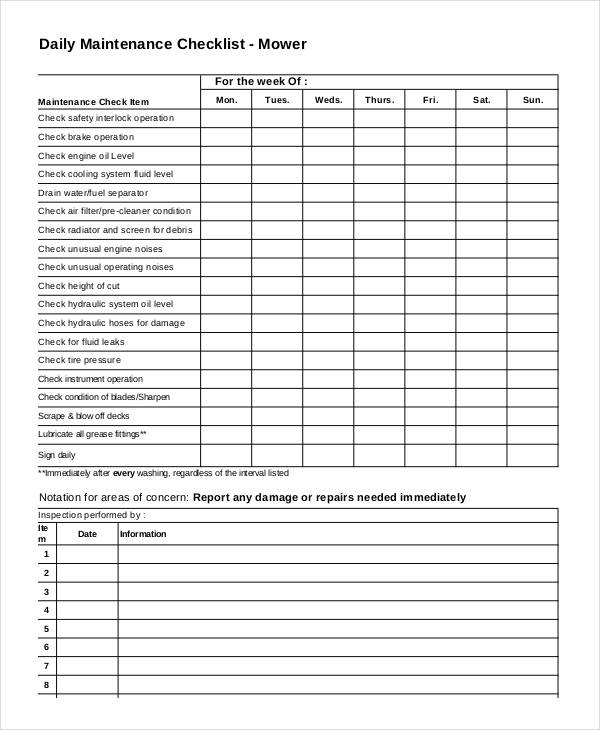
3. Assign Checklist
Once the routine maintenance checklist has been prepared, business managers need to assign the checklist to a maintenance technician.
For uninterrupted and smooth maintenance of assets, the maintenance technician must have complete and consistent access to the checklist and maintenance strategies at all times.
4. Perform Routine Maintenance
This step of the routine maintenance workflow is straightforward and most time-consuming. While performing routine maintenance tasks, maintenance technicians must take note of inspecting and repairing the broken parts of the asset or equipment to avoid uncertain circumstances in the future.
5. Schedule Next Maintenance in the Calendar
Since routine maintenance can not be considered a one-time activity, it is important for the maintenance department to consider future maintenance prospects of the assets.
Therefore, post performing routine maintenance on identified assets and equipment, technicians and production managers align the next maintenance schedule.
Why is Routine Maintenance Important?
Businesses that regularly undertake routine maintenance tasks in their facilities experience a number of benefits, helping them keep their machines, buildings, and operations up and running at all times. Below listed are some of the key advantages of routine maintenance:
● Helps Identify Problems
Routine maintenance can help technicians identify potential threats and problems in the assets and equipment of a facility, keeping all assets in optimal condition. Timely detection of problems leads to better productivity, fewer failures, higher profitability, and enhanced safety of employees.
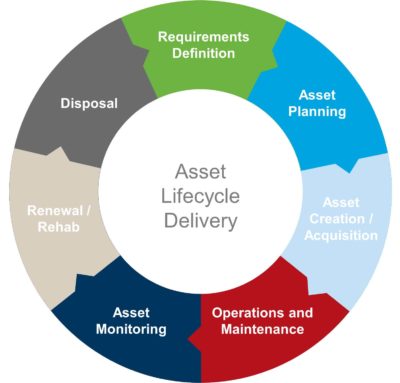
● Decreased Downtime
Asset and equipment downtime can not only lead to loss of revenue and production, but it can also potentially cause damage to a company’s reputation. Since unplanned downtime is more likely to occur than planned downtime, production managers must ensure minimum downtime in their facilities.
Routine maintenance activities such as machine servicing safety, replacing parts, and upgrading alarm systems can decrease asset downtime, leading to higher business revenue and profits.
● Increased Equipment Lifespan
Regular inspections and precautionary measures ensure that facility assets and equipment are in good shape, well-maintained, and are less likely to break down.
It overall increases the lifespan of the assets as small damages are immediately taken care of before they lead to complete asset breakdown.
● Cost-effective
Routine maintenance and more sophisticated maintenance strategies enable businesses to save money by timely detecting and fixing asset failures. By undertaking routine maintenance tasks, businesses also don’t have to invest frequently in new machinery and spare parts.
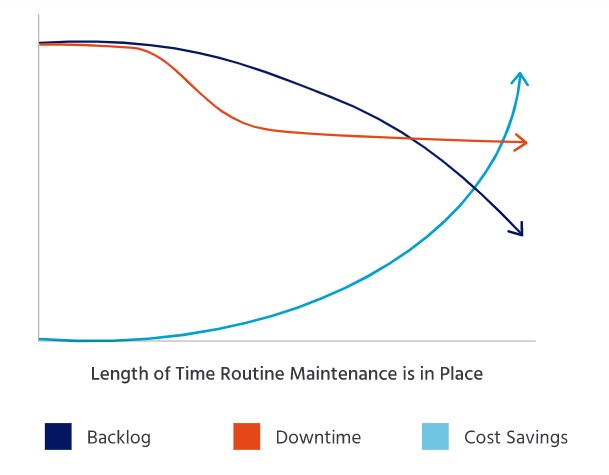
Examples of Routine Maintenance
Below listed are some of the typical examples of routine maintenance activities:

- Regular inspections of facility assets and equipment by warehouse technicians
- Checking, testing, and upgrading safety equipment like alarm systems, checking fire extinguishers, and safety barriers.
- Replacing depreciated parts of the asset.
- Checking and replacing damaged utilities like light bulbs, fans, door locks, taps, and faucets.
- Replacing HVAC filters
- General facility maintenance, including washing windows, landscaping, trash removal, cleaning floors, and sanitizing bathrooms.
- Replacing damaged signage and deterioration checking on ongoing basis.
- Stocking of cleaning equipment and basic amenities like toilet paper.
Lubricating and adjusting assets
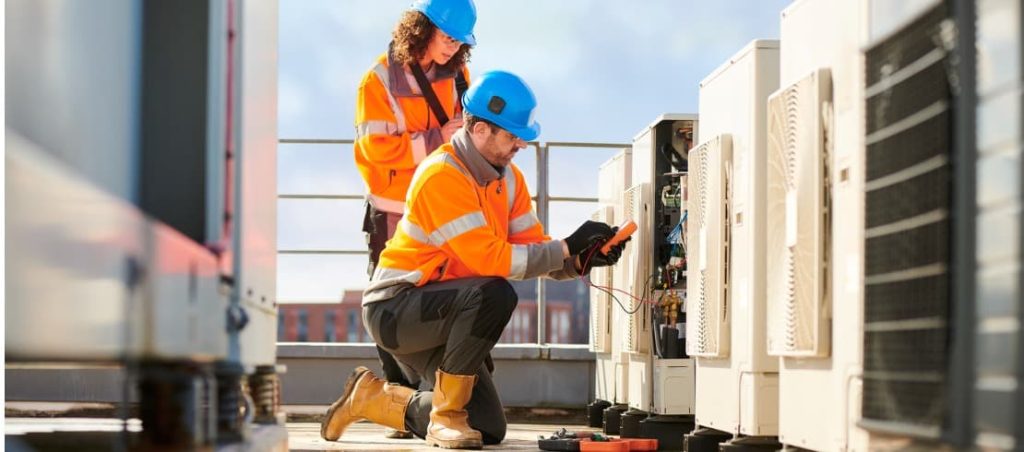
There were just a few examples of routine maintenance activities. However, different facilities have different requirements. Therefore, routine maintenance activities may vary from business to business and facility to facility.
Routine Maintenance vs Preventive Maintenance - What's the Difference?
The majority of people use the terms routine maintenance and preventive maintenance interchangeably. Despite exceedingly similar features, both concepts have striking differences. Some of the notable differences between routine maintenance and preventive maintenance are listed below:
Interval: As discussed above, routine maintenance activities usually occur at regular, time-based intervals. However, preventive maintenance is prompted by present time-based and meter-based intervals.

Objective: The goal of routine maintenance is to keep the business operations in an optimal condition at all times. On the other hand, preventive maintenance aims to prevent asset breakdowns and downtime.
Complexity: Routine Maintenance tasks are usually simple in nature and are associated with general upkeep. Preventive maintenance activities are more involved, and usually, formal training is required for performing these tasks.
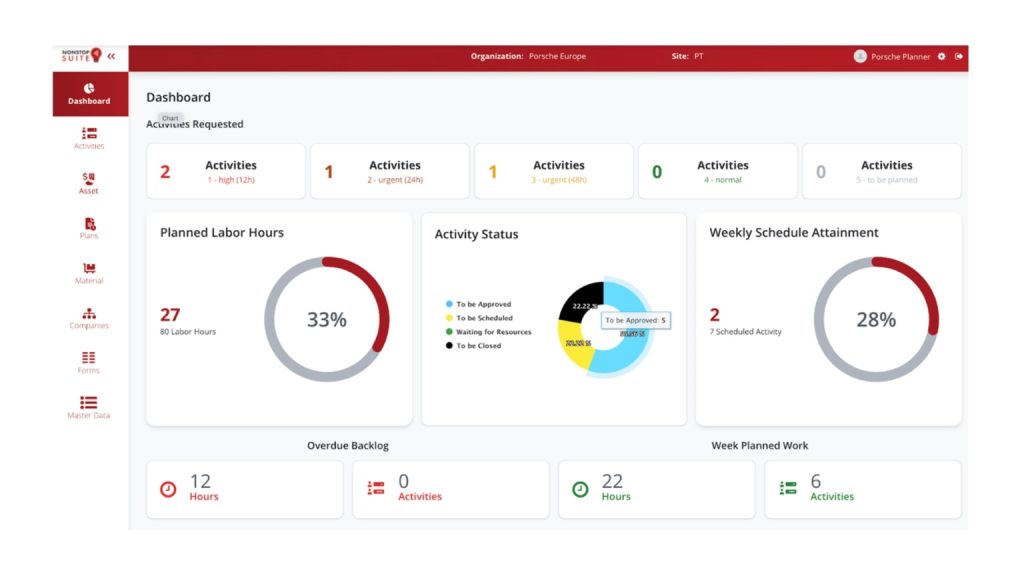
Wrapping Up!
Routine maintenance is a crucial business aspect that enables businesses to streamline their routine tasks, leading to enhanced productivity and management. Regular inspections of assets and simple maintenance tasks like lubricating equipment or identifying assets that need technical attention can prevent asset and equipment failure.
Revolutionize your business operations and asset care with the world’s leading asset management capabilities – NonStop Suite. NonStop Suite’s asset and equipment management capabilities help businesses streamline their asset maintenance and management by seamlessly digitizing work processes.
To learn more, visit The NonStop Suite


